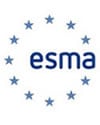The implementation of a ‘settlement discipline regime’ in Europe is set to be delayed until the second quarter of 2017, according to the European Securities and Markets Authority (ESMA).
Last week, ESMA published a consultation paper on the draft regulatory technical standards (RTS) of the central securities depository regulation (CSDR).
A key component of the regulation is the harmonisation of settlement discipline across Europe. These consist of a common set of measures CSDs based in Europe will have to adopt to prevent and address settlement failures.
In order to ensure this, ESMA has proposed an application date of the settlement discipline regime to be 18 months after the publication of the final RTS on CSDR.
"We welcome ESMA has modified its approach towards the implementation of settlement discipline regime because a strict timeline is creating too many conflicts for the industry in relation to the T2S-Implementation running in parallel,” says Mathias Papenfuss, chief operating officer, Clearstream.
"What we need to do is verify the timeline and whether the 18 months are appropriate because it is the first time we have seen something more concrete on a settlement discipline regime. Now after seeing this, we have to analyse whether the timeline is sufficient or do we need strive for an extension.”
Among their analysis would be whether the timeline is sufficient for Europe’s CSDs and custodian banks to cooperate and develop harmonised systems.
“The CSDs have to agree on a standard definition of a failed trade and build the mechanisms to report the failed trade to their regulators,” says Tony Freeman, executive director of industry relations, Omgeo.
“While the global custodians, which internalise settlement processes, have got to build mechanisms to report their internal settlement processes on a monthly basis as well.”
In addition, for the first time, market participants will have to meet a settlement efficiency target of 99.5%.
“Most market participants state that settlement rate in Europe is 96-97%, so this implies it has to go up between two to three percentage points. However this improvement might be difficult,” adds Freeman.
In addition, following the publication of the draft RTS, Papenfuss argues ESMA will have to run their own simulations and analysis to justify its rulings.
“In ESMA's impact assessment, they need to now justify the cost that has to be borne by the market. It also creates a lot of pressure to justify investment and to achieve this standard,” Papenfuss adds.
